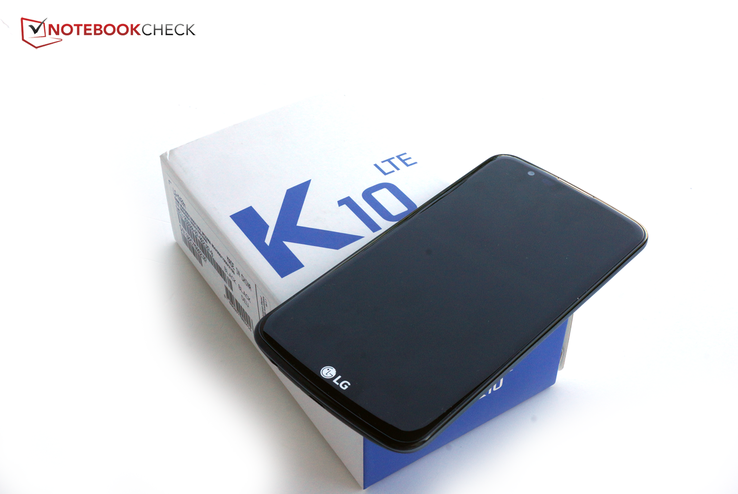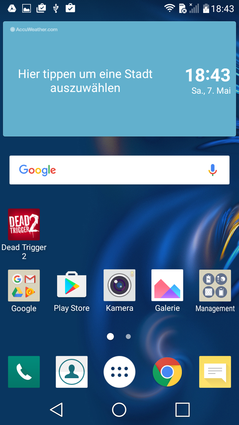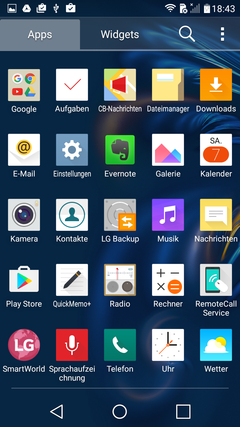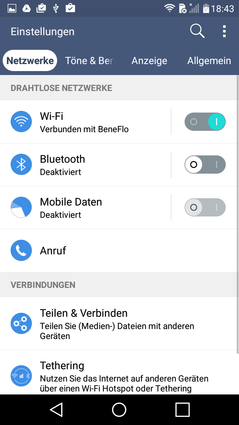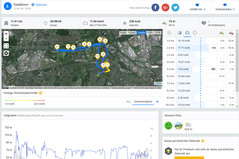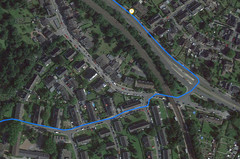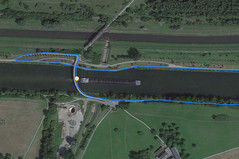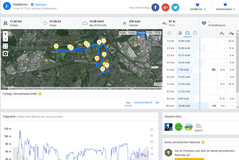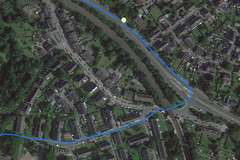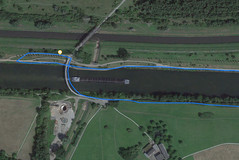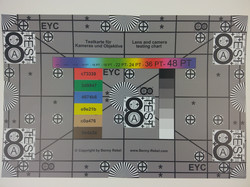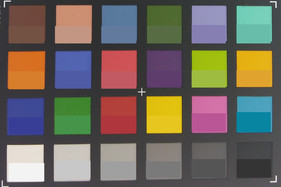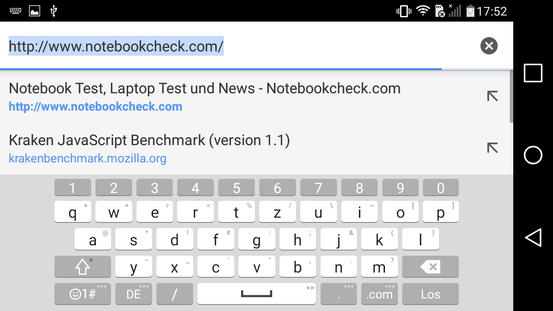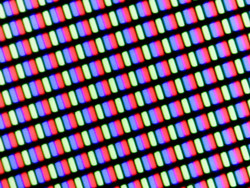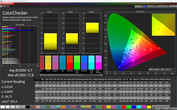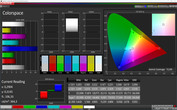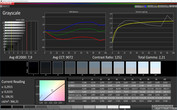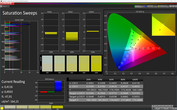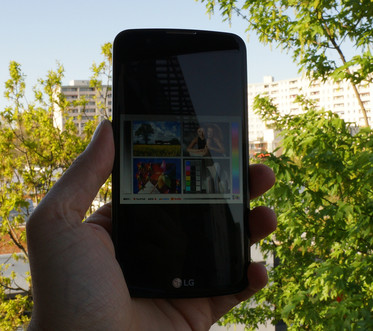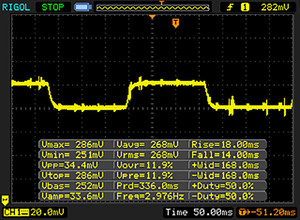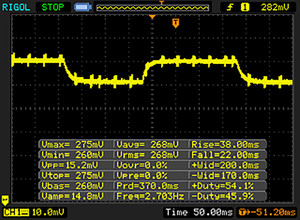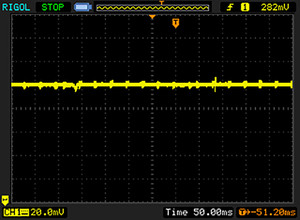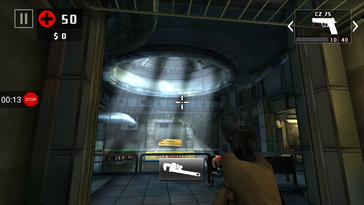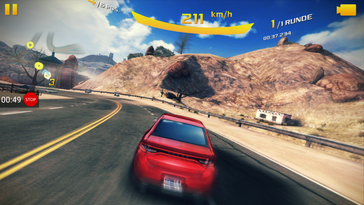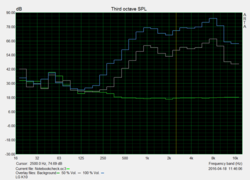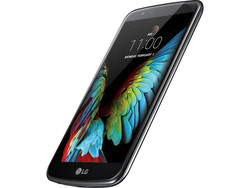LG K10 Smartphone Review
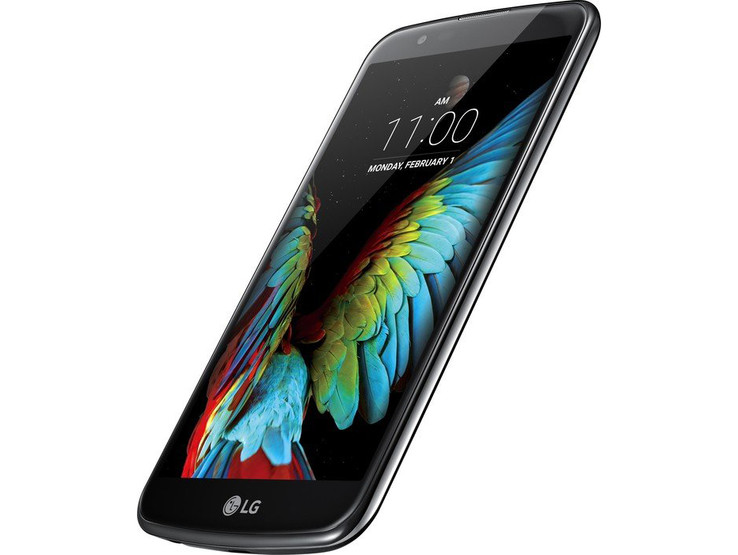
For the original German review, see here.
LG's new K lineup wants to be affordable yet stylish. LG's K10 is the bigger of the two released models. Curved glass on the sides and an elegantly patterned back are to add a touch of premium quality to the lower price-sectors. LG demands 249 Euros (~$281) as the recommended price for the K10. However, the handset can already be found for 160 Euros (~$181) on the Internet.
Can the handset fill us with awe for this price or is it just another cheap smartphone? In any case, some comparable devices, such as LG's own Class with a metal casing, Archos' Diamond S, Asus' ZenFone 2 Laser or Acer's Liquid Z630, exist in this price range.
Case
LG proves that it is possible to build affordable smartphones with a metal casing with its Class. LG relies on a plastic casing for its K10, but its back cover can be removed making it possible to install a removable battery. Thanks to the "2.5D glass", the front looks as if it has been made from one piece; the glass bends around the sides toward the back.
The rear is patterned, and a chrome-colored frame highlights the slightly protruding camera and LG-typical controls on the back. The subtle pattern feels really good, but the smartphone's back is definitely too slippery for our taste.
As for design, LG relies on curved edges that give the handset an organic look. A nice contrast between the very glossy front and the matte back evolves. However, the front is also very receptive for fingerprints.
The stiffness of LG's K10 is very good; the casing can hardly be warped. However, strong pressure on the back becomes visible in the screen's liquid crystals. Very quiet cracking noises are audible when it is twisted, but LG'S K10 makes a very solid impression.
Connectivity
LG's K10 is no different than other existing smartphones in terms of physical interfaces: Only a USB 2.0 port and 3.5 mm headset jack. At least the wireless connections are a bit more extensive with Bluetooth 4.1 and NFC. USB OTG support is just as absent as a fingerprint reader.
A storage capacity of 16 GB is standard in this price range and also generally sufficient. However, users who listen to music torrents or install many apps on the smartphone will have to insert a micro-SD card; a maximum of 128 GB is supported officially.
Software
Although LG now offers devices with Android 6, the software of LG's K10 is still based on Android 5.1.1. A software update was not available at test time. LG sooner modifies the user interface's looks. Everyone who has ever used Android should cope easily.
LG restrains itself pleasantly with preloading apps. The user will not have the impression that the smartphone is stuffed with useless apps or adware. "LG Smart World" is LG's own app shop and LG can directly access the handset via "Remote Call Service" and help in case of problems - naturally, only when permitted. "LG Backup" is a backup solution that can also be used for migrating data from an old device via NFC.
Communication & GPS
Four times GPRS, four times UMTS, five times LTE would be an appropriate summary of the frequency diversity of LG's K10. The smartphone is thus fairly well-equipped for travelling. The maximum speeds in the LTE network are 150 MBit per second in download and 50 MBit per second in upload. The signal strength in an urban area was quite good even inside buildings in our opinion. We usually had the full signal and the LTE network.
LG's K10 supports the 802.11 b/g/n Wi-Fi standards, which is also category standard. These standards should also suffice for most users since up to 300 MBit per second is possible in the 802.11n networks. Most Internet connections offer considerably lower transmission rates. The Wi-Fi signal is also good. We still had 3/4 of signal strength at a distance of ten meters to a FritzBox 6490 router and through three walls. Pages were opened just as fast as when standing in the router's direct vicinity.
The GPS module in LG's K10 did not make a good first impression. We could not connect to satellites indoors using the "GPS Test" app. The smartphone also only found single satellites outdoors and not enough were located for reliably tracking us even after prolonged waiting.
We took LG's K10 along with Garmin's Edge 500 on a bike tour and compared the accuracy of the GPS sensor. The measured routes display a difference of 200 meters. That does not even add up to a deviation of 2%, which is throughout acceptable. LG's K10 is a bit more inaccurate than our navigation computer, but its accuracy should be sufficient for leisure time activities or occasional navigation purposes.
Telephone & Call Quality
LG's phone app looks a bit different than Google's stock app and combines the phone and contact app, but it offers very similar functions. When the app is opened, the user is directed to a big keypad. The tabs for call lists, contacts, favorites and groups are displayed at the top. The tabs can be rearranged and faded out.
We test the voice quality by making a test call. We understood our contact quite clearly; the earpiece's maximum volume is impressive although its sound is then no longer absolutely clear. In return, the microphone sometimes produces a quiet noise but is otherwise relatively sensitive so that the caller does not have to speak too loud to be heard. We would call the overall call quality "good"; high-end smartphones prove that there is still room for improvement here, though.
Cameras
13 megapixels on the rear and 5 megapixels on the front - thus, LG's K10 is pretty much in the lower midfield among the comparison devices in terms of pure megapixel count. Archos' Diamond S, for example, offers 16 and 8 megapixels, both cameras in Acer's Liquid Z630 have 8 megapixels.
However, it is not only megapixels that count but also sharpness, color reproduction and the general photo quality, too. The primary camera in LG's K10 only convinces to a degree: The photos look blurred and grainy when zoomed. Furthermore, the colors look pale. The photos also blur very quickly in dark environments although the brightening is satisfactory. Details are well-recognizable on bright surfaces in strong differences between bright and dark surfaces. On the other hand, dark surfaces are very gloomy so that almost nothing can be recognized.
The front-facing camera shoots decent photos. The color reproduction is appealing and the photos are not overly blurred when zoomed. In total, absolutely suitable for selfies.
Videos can be recorded in Full HD at 30 frames per second. The quality is acceptable, but the colors look a bit pale here, too.
We can confirm that the reproduced colors are pale after photographing the ColorChecker color card. Many color tones look much paler than the reference. White is rendered as beige. The details again look faded and blurred in our reference chart that we also photographed (dark-brown color patch).
Accessories & Warranty
LG's K10 is shipped with the "usual" accessories. At least a headset is included besides the charger and USB cable. Product-specific accessories for later purchase are presently not offered on LG's website. The handset comes with a warranty of 24 months; the accessories are covered for 12 months and the battery for 6 months.
Input Devices & Handling
LG uses a proprietary keyboard that is easy to use and clearly arranged. A dedicated number row is situated above the letter keys, but the letter keys are not too small and allow reliable typing. It is always possible to switch to Google's stock keyboard or install a different keyboard from Google's Play Store when desired.
The usual LG control unit with the standby button flanked by the volume controls is found on the smartphone's back. That might need a bit of getting used to, but they can be used just as well as buttons situated on the casing's sides. However, they also have disadvantages: The handset cannot be wakened from standby when it is on a table. LG's K10 can therefore also be activated via double-tapping the screen.
The touchscreen can be used well. Its surface allows the finger to glide easily, but it still has a slight, pleasant resistance.
Display
LG's K10 has a resolution of 1280x720 pixels, which is category standard. Solely Honor's 5X features a Full HD screen. The K10 is not a brightness marvel, either: a maximum of 376 cd/m² is sooner below average. Asus' ZenFone 2 Laser, LG's Class and Honor's 5X offer considerably brighter screens. At least the illumination of 92% is relatively homogeneous and large areas look evenly colored.
| |||||||||||||||||||||||||
Brightness Distribution: 92 %
Center on Battery: 370 cd/m²
Contrast: 1321:1 (Black: 0.28 cd/m²)
ΔE ColorChecker Calman: 6.7 | ∀{0.5-29.43 Ø4.78}
ΔE Greyscale Calman: 7.9 | ∀{0.09-98 Ø5}
Gamma: 2.21
CCT: 9072 K
| LG K10 Adreno 306, 410 MSM8916, 16 GB eMMC Flash | Archos Diamond S Mali-T720 MP4, MT6753, 16 GB eMMC Flash | Asus Zenfone 2 ZE500KL Adreno 306, 410 APQ8016, 16 GB eMMC Flash | Acer Liquid Z630 Mali-T720 MP2, MT6735, 16 GB eMMC Flash | LG Class Adreno 306, 410 APQ8016, 16 GB eMMC Flash | Honor 5X Adreno 405, 616 MSM8939v2, 16 GB eMMC Flash | |
|---|---|---|---|---|---|---|
| Screen | 17% | 28% | 18% | 6% | 17% | |
| Brightness middle (cd/m²) | 370 | 357 -4% | 467 26% | 334 -10% | 518 40% | 535 45% |
| Brightness (cd/m²) | 355 | 363 2% | 460 30% | 326 -8% | 492 39% | 521 47% |
| Brightness Distribution (%) | 92 | 95 3% | 95 3% | 91 -1% | 91 -1% | 85 -8% |
| Black Level * (cd/m²) | 0.28 | 0.3 -7% | 0.19 32% | 0.51 -82% | 0.43 -54% | |
| Contrast (:1) | 1321 | 1557 18% | 1758 33% | 1016 -23% | 1244 -6% | |
| Colorchecker dE 2000 * | 6.7 | 6.11 9% | 3.28 51% | 4.52 33% | 5.41 19% | 4.88 27% |
| Colorchecker dE 2000 max. * | 17.8 | 9.91 44% | 8.76 51% | 8.66 51% | ||
| Greyscale dE 2000 * | 7.9 | 4.12 48% | 1.89 76% | 4.39 44% | 7.67 3% | 5.2 34% |
| Gamma | 2.21 100% | 2.24 98% | 2.21 100% | 2.23 99% | 2.19 100% | 2.26 97% |
| CCT | 9072 72% | 7272 89% | 6734 97% | 6917 94% | 8521 76% | 7766 84% |
| Color Space (Percent of sRGB) (%) | 90.9118 |
* ... smaller is better
The black level of 0.28 cd/m² is quite low, and thus dark areas are not illuminated too strongly from the back making them look really deep and dark. The contrast ratio of 1321:1 is good.
Subjectively, colors look fairly vivid on the panel. However, we are naturally curious and check this using the spectrophotometer and CalMAN software. The extremely high average color temperature of over 9000 Kelvin strikes us first, which also explains the visible bluish tint that we observed in the lighter grayscale levels. The colors look much cooler in total than in the reference color space due to the high blue component. The color shifts are overall very high and particularly extreme in pure blue.
The low maximum brightness makes it difficult to recognize something on the screen in bright sunlight. LG's K10 can be used in the shade, but other smartphones are considerably more suitable for use in bright ambient light.
Thanks to the panel's IPS technology, content is easy to recognize even from very flat viewing angles. Colors do not invert and brightness remains stable.
Display Response Times
| ↔ Response Time Black to White | ||
|---|---|---|
| 32 ms ... rise ↗ and fall ↘ combined | ↗ 18 ms rise | |
| ↘ 14 ms fall | ||
| The screen shows slow response rates in our tests and will be unsatisfactory for gamers. In comparison, all tested devices range from 0.1 (minimum) to 240 (maximum) ms. » 85 % of all devices are better. This means that the measured response time is worse than the average of all tested devices (20.2 ms). | ||
| ↔ Response Time 50% Grey to 80% Grey | ||
| 60 ms ... rise ↗ and fall ↘ combined | ↗ 38 ms rise | |
| ↘ 22 ms fall | ||
| The screen shows slow response rates in our tests and will be unsatisfactory for gamers. In comparison, all tested devices range from 0.165 (minimum) to 636 (maximum) ms. » 96 % of all devices are better. This means that the measured response time is worse than the average of all tested devices (31.6 ms). | ||
Screen Flickering / PWM (Pulse-Width Modulation)
| Screen flickering / PWM not detected | |||
In comparison: 53 % of all tested devices do not use PWM to dim the display. If PWM was detected, an average of 8101 (minimum: 5 - maximum: 343500) Hz was measured. | |||
Performance
Almost two-and-a-half years ago, so December 2013, Qualcomm introduced its Snapdragon 410 as its first 64-bit SoC. Now the MSM8916 version is installed in LG's K10. Our review sample should actually be on par with some comparison devices based on similarly strong SoCs. That is also the case in the processor benchmarks; LG's Class and Acer's Liquid Z630 do not stand out here. Archos' Diamond S and Honor's 5X, however, prove that the buyer can get considerably more power in this price range. We barely noticed stutters while navigating, and apps launched fairly quickly.
The graphics unit's name is Qualcomm Adreno 306, and it also delivers the expected rates. Archos' Diamond S and Honor's 5X also provide a considerably higher performance in this section.
| AnTuTu v6 - Total Score (sort by value) | |
| LG K10 | |
| Archos Diamond S | |
| Honor 5X | |
| Geekbench 3 | |
| 64 Bit Single-Core Score (sort by value) | |
| LG K10 | |
| Archos Diamond S | |
| Honor 5X | |
| 64 Bit Multi-Core Score (sort by value) | |
| LG K10 | |
| Archos Diamond S | |
| Honor 5X | |
| 3DMark | |
| 1280x720 offscreen Ice Storm Unlimited Score (sort by value) | |
| LG K10 | |
| Archos Diamond S | |
| Acer Liquid Z630 | |
| Honor 5X | |
| 1280x720 offscreen Ice Storm Unlimited Graphics Score (sort by value) | |
| LG K10 | |
| Archos Diamond S | |
| Acer Liquid Z630 | |
| Honor 5X | |
| 1280x720 offscreen Ice Storm Unlimited Physics (sort by value) | |
| LG K10 | |
| Archos Diamond S | |
| Acer Liquid Z630 | |
| Honor 5X | |
| 2560x1440 Sling Shot OpenGL ES 3.0 (sort by value) | |
| LG K10 | |
| Archos Diamond S | |
| LG Class | |
| Asus Zenfone 2 ZE500KL | |
| Honor 5X | |
| 2560x1440 Sling Shot OpenGL ES 3.0 Graphics (sort by value) | |
| LG K10 | |
| Archos Diamond S | |
| LG Class | |
| Asus Zenfone 2 ZE500KL | |
| Honor 5X | |
| 2560x1440 Sling Shot OpenGL ES 3.0 Physics (sort by value) | |
| LG K10 | |
| Archos Diamond S | |
| LG Class | |
| Asus Zenfone 2 ZE500KL | |
| Honor 5X | |
| GFXBench (DX / GLBenchmark) 2.7 | |
| T-Rex Onscreen (sort by value) | |
| LG K10 | |
| Archos Diamond S | |
| LG Class | |
| Acer Liquid Z630 | |
| Asus Zenfone 2 ZE500KL | |
| Honor 5X | |
| 1920x1080 T-Rex Offscreen (sort by value) | |
| LG K10 | |
| Archos Diamond S | |
| LG Class | |
| Acer Liquid Z630 | |
| Asus Zenfone 2 ZE500KL | |
| Honor 5X | |
| GFXBench 3.0 | |
| on screen Manhattan Onscreen OGL (sort by value) | |
| LG K10 | |
| Archos Diamond S | |
| LG Class | |
| Acer Liquid Z630 | |
| Asus Zenfone 2 ZE500KL | |
| Honor 5X | |
| 1920x1080 1080p Manhattan Offscreen (sort by value) | |
| LG K10 | |
| Archos Diamond S | |
| LG Class | |
| Acer Liquid Z630 | |
| Asus Zenfone 2 ZE500KL | |
| Honor 5X | |
| PCMark for Android - Work performance score (sort by value) | |
| LG K10 | |
| Archos Diamond S | |
| LG Class | |
| Honor 5X | |
Browsing on the Internet with LG's K10 is relatively fast. Most comparison devices are barely any faster. Only the much speedier Honor 5X stands out here. Browsing with LG's K10 also feels smooth subjectively.
| Mozilla Kraken 1.1 - Total (sort by value) | |
| LG K10 | |
| Archos Diamond S | |
| LG Class | |
| Acer Liquid Z630 | |
| Asus Zenfone 2 ZE500KL | |
| Honor 5X | |
| Octane V2 - Total Score (sort by value) | |
| LG K10 | |
| Archos Diamond S | |
| LG Class | |
| Acer Liquid Z630 | |
| Asus Zenfone 2 ZE500KL | |
| Honor 5X | |
| WebXPRT 2015 - Overall (sort by value) | |
| LG K10 | |
| LG Class | |
| Honor 5X | |
| JetStream 1.1 - Total Score (sort by value) | |
| LG K10 | |
| Archos Diamond S | |
| Honor 5X | |
* ... smaller is better
Reads slowly, writes quickly - that is how the installed storage could be described. LG's K10 can sometimes even keep up with Honor's 5X in write.
We also test the micro-SD slot's speed with our Toshiba Exceria Pro M401 reference card, and we are happy: 75 MBit per second in read and 45 MBit per second in write are decent rates even if they are far from utilizing the potentials of our micro-SD card. Apps can be moved to the SD card, but that would clearly increase their loading time based on our measurements.
| AndroBench 3-5 | |
| Sequential Read 256KB (sort by value) | |
| LG K10 | |
| Archos Diamond S | |
| LG Class | |
| Acer Liquid Z630 | |
| Honor 5X | |
| Sequential Write 256KB (sort by value) | |
| LG K10 | |
| Archos Diamond S | |
| LG Class | |
| Acer Liquid Z630 | |
| Honor 5X | |
| Random Read 4KB (sort by value) | |
| LG K10 | |
| Archos Diamond S | |
| LG Class | |
| Acer Liquid Z630 | |
| Honor 5X | |
| Random Write 4KB (sort by value) | |
| LG K10 | |
| Archos Diamond S | |
| LG Class | |
| Acer Liquid Z630 | |
| Honor 5X | |
| Sequential Read 256KB SDCard (sort by value) | |
| LG K10 | |
| Sequential Write 256KB SDCard (sort by value) | |
| LG K10 | |
Games
To ascertain the gaming performance of LG's K10, we installed the "GameBench" app and determine the frame rates of the zombie shooter Dead Trigger 2 and the race game Asphalt 8 in high settings. LG's K10 does not do a bad job at all in the shooter and achieves a consistent 30 frames. Based on the identical results of many other smartphones, we assume that the game limits the frame rate to this value on slower graphics units.
16 frames per second was achieved in Asphalt 8 so that it cannot be played without stutters. We did not perceive these very low frame rates as tragic, but they will annoy hardcore gamers.
Touchscreen and position sensor functioned very well as controls.
| Asphalt 8: Airborne | |||
| Settings | Value | ||
| high | 16 fps | ||
| Dead Trigger 2 | |||
| Settings | Value | ||
| high | 30 fps | ||
Emissions
Temperature
Firstly: LG's K10 can still be held comfortably even after prolonged full load. However, it heats up considerably more than the comparison devices. Only Honor's 5X with a much higher performance SoC gets a bit warmer. We measured a maximum of 40.3 °C on the back, and a maximum of 38.3 °C on the front. The temperatures are considerably lower in idle mode, but a maximum of 33.4 °C is still palpable.
That the increased temperatures do not limit the processor and graphics unit's performance is great. The frame rates remain identical even after repeating the same sequence of GFXBench Battery Test 30 times.
(+) The maximum temperature on the upper side is 38.3 °C / 101 F, compared to the average of 35.2 °C / 95 F, ranging from 21.9 to 247 °C for the class Smartphone.
(±) The bottom heats up to a maximum of 40.3 °C / 105 F, compared to the average of 34 °C / 93 F
(+) In idle usage, the average temperature for the upper side is 30.7 °C / 87 F, compared to the device average of 32.9 °C / 91 F.
Speaker
We measured a maximum volume of 89.67 dB(A) - a very respectable rate for a little mono speaker on the back of a smartphone. Furthermore, the speaker does not distort in the maximum setting, either.
The sound is rather middling in total: virtually no bass, overemphasized mids and the sound makes a slightly muffled impression overall. The speaker is well-suitable for peeking into a YouTube video or rendering voice. Music fans should use the headphone jack or Bluetooth, though. Both interfaces transmit a clear, undistorted signal.
Energy Management
Power Consumption
Unfortunately, the review sample did not provide useful rates in our power consumption tests.
Battery Runtime
The battery has an output of 8.8 watt hours, and our LG K10 achieves a practical Wi-Fi runtime of 7:33 hours. The smartphone should therefore last a workday even under permanent light use. Our review sample does not provide bad runtimes with that, but it cannot stand out from the comparison devices, either. Particularly, Acer's Liquid Z630 and Honor's 5X offer considerably longer runtimes.
Our review sample still lasted for almost four hours of load. That is a decent rate and an endurance of 18:43 hours in idle mode is also very impressive.
| LG K10 Adreno 306, 410 MSM8916, 16 GB eMMC Flash | Asus Zenfone 2 ZE500KL Adreno 306, 410 APQ8016, 16 GB eMMC Flash | Archos Diamond S Mali-T720 MP4, MT6753, 16 GB eMMC Flash | LG Class Adreno 306, 410 APQ8016, 16 GB eMMC Flash | Acer Liquid Z630 Mali-T720 MP2, MT6735, 16 GB eMMC Flash | Honor 5X Adreno 405, 616 MSM8939v2, 16 GB eMMC Flash | |
|---|---|---|---|---|---|---|
| Battery runtime | -41% | 4% | -8% | 65% | -1% | |
| Reader / Idle (h) | 18.7 | 16.3 -13% | 25.5 36% | 17.6 -6% | ||
| H.264 (h) | 10.1 | 10.5 4% | 13.4 33% | 10 -1% | ||
| WiFi v1.3 (h) | 7.6 | 4.5 -41% | 7.9 4% | 7 -8% | 14 84% | 10.7 41% |
| Load (h) | 3.9 | 3.3 -15% | 8 105% | 2.4 -38% |
Pros
Cons
Verdict
LG's K10 is a pleasant to hold smartphone that delivers a solid performance in terms of call and signal quality, software, casing and battery life. No more and no less. Although that is not enough for outbreaks of enthusiasm, unlikely anyone will be unhappy with the handset. It is a solid worker that could have its moment of fame thanks to the 2.5D glass on the front and the lightly patterned back.
However, users will also get upset about the dark screen with an extreme bluish tint, the gloomy photos and slow GPS in everyday use.
Hardly anyone will lose their heart to LG's K10: It is too middling in many aspects. But users who see their smartphone as an everyday tool will get a decent device.
So there are some negative points as well as many aspects that let LG's K10 look very solid. Buyers looking for an affordable device that supports LTE, do not really need the camera and like the design will look at LG's K10, but they should also look at the diverse competition at the same time.
LG K10
- 05/09/2016 v5.1 (old)
Florian Wimmer




